#low-cost flights to Europe
Explore tagged Tumblr posts
Text
Discover the best hotels in Paris and book your stay effortlessly through Travel Cutey. Find exclusive deals on low-cost flights to Europe and plan the perfect getaway to Paris and beyond.
#low-cost flights to Europe#Travel Cutey#best hotels in Paris#cheap air tickets online#cheap flight & hotel deals
0 notes
Text
Christmas Wishes

Summary: When he's not going to be home for Christmas, you fly to Spain to meet him there instead. (Leon S. Kennedy x reader)
Word Count: 1.7K
Notes: Sorry that I'm a day late, my flights got all messed up. So I might be a day late to AEST posting but I'll try to catch up and do a double post somewhere down the line. This deleted half and I couldn't remember the other half so sorry in advance hahaha.
~RiRi <33
━━━━━━━━━━━━━༻❁༺━━━━━━━━━━━━━━
It wasn't often that Leon got time off.
He was overseas more than he was home, and his back had gotten used to the feeling of cheap hotel mattresses rather than the one you two shared. The first Christmas together he was in the field, which you couldn't blame him for. He had managed a miracle and made your anniversary, and it was easy enough to fight off your family inviting him to visit for the season. The second, he missed both occasions, and the third he was only back on New Years which left you to face the snide side eyes from your aunts, flicking from you to the empty chair next to you. So finally having enough, you asked where he was going to be this year.
Europe? Okay. You could do that.
Might be late for Christmas? No. Not this year. What country does he pass through?
Spain? Perfect. You'll meet him in Madrid.
With an unceremonious hang up you had booked your tickets, pulling it from the holiday account you both had set up that never got used. You had felt a little anxious about the cost of the tickets and accommodation, but you knew his pay check was more than enough to cover it. However, that feeling went away when you hand was tucked securely in Leon's strong grip, strolling along the stalls in the Mayor's Plaza.
Your hands had been jittering getting off of the plane, a cold sweat creeping down your neck. Getting through customs hadn't been too bad, shuffling along in the expected holiday traffic as people either went on vacation or returning home to their loved ones. Spain wasn't exactly home, but Leon was. That feeling was cemented in your mind when you saw him, rugged up and scarf covering the lower half of his face. He was looking at the arrivals board, those baby blue eyes tired as they flicked over the list of flights. With the instincts only an agent like him could have he turned his neck, locking on to you slowly walking from the arrivals gate. Upon confirmation that it really was Leon, you broke into a light jog and then a sprint. Your chest felt tight as you raced towards him, and there was a comforting burn in your eyes when he opened his arms for you. You collided roughly, but he managed to keep you both stable and wrapped an arm around your waist.
"That happy to see me sweetheart?"
His low murmur fills your ears like warm honey and makes your head cottony, not letting you do anything but breathe in the deep spice of his aftershave. You just hug him tighter, finally able to feel him pressed against you after months of being held overseas. The way he tightened his arms ever so slightly told you all you needed to know; that he didn't mind at all.
You didn't move from that for the next few days, stuck to him. Even now as you wandered the Christmas markets you had tucked yourself securely into his side, his arm over your shoulder to guide you through the throngs of people. He took a sip of the mulled wine, offering you the cup silently. You took it and had a sip, the liquid coating your throat in warmth. "Anything you want to go look at?" you asked quietly, nursing the cup. He cast his eyes down to yours, before looking away pensively. "Not particularly. Just enjoying the atmosphere." he smiled softly. "It's nice."
"It's called the Christmas spirit. You should get into it, it's a nice look on you." You teased, craning up to poke at his cheek. He bats your finger away with a scoff. "Really now?"
"It's our first Christmas together. Of course, it's going to feel more special than usual." you hum, and his eyes soften. He brings you in just a touch closer, sighing out through his nose. "Thanks for being here." he says after a moment. "I…I really am grateful you came this way just for me."
Your breath hitches at the softness in his voice, a chip of pain lacing his tone. "It's always for you." you argue back. "Always will be. you can't shake me that easily. Four years and the rest of forever to go." you say with decisive smile. Leon smiles, crows’ feet at the corners of his eyes crinkling. He removes his arm from around your shoulder, dropping it to lace his gloved hand with your bare fingers and bring your knuckles to his mouth. His lips press against them in a soft kiss, eyes warm.
"Is that an offer, sweetheart?"
after a few more hours of wandering the markets and enjoying the festivities, your feet were starting to get sore. Leon had left you at a food stall to get treats for the both of you, while he went to go do something. You had eyed him suspiciously, casting him a knowing glance when he returned with a flat, black box. You traded him the food, sighing as you waved it in his face. "What's this? It's not Christmas just yet."
He shrugged. "Early enough. Actually, I think I'm just very very very late for three other ones."
you shake your head at the comment but open the box anyways, revealing a beautiful gold necklace on the velvet.
"The vendor over there makes them himself. Helped me pick it out."
It was a stunning, fine gold chain, with a round blue sapphire drop at the end, same colour as his eyes. "Leon," you beam. "It's gorgeous."
he smiles in return, gesturing with his free hand for you to turn around.
Goosebumps raise on your skin as he puts in on, his fingers brushing against the nape of your neck.
"Beautiful," he mutters as he pulls back to look at it on you, before deftly tucking it under your scarf and against your chest. "Merry Christmas."
"Merry Christmas." you say back, raising your chin to kiss him. It's a little hard because of your grin, but you can't help yourself. Your heart warms as you place your palm over where it's resting under your clothes, thudding your head on his shoulders as you continue walking. T
You both decide to go home, walking hand in hand back to the hotel. As the music and Christmas lights faded behind you, bells began ringing from somewhere else in the square. you could see the haze that was slowly settling over Leon's eyes, sinking deeper in time with each chime. His lips turned downwards slowly, gaze becoming lost in the dark horizon. You squeeze his hand, trying to bring him back to the present. "You okay?" you ask softly, worry written in your brow. He doesn’t meet your eyes, still locked on the distance.
"there’s somewhere I want to call in."
you're surprised at the conviction in his tone, but you don't protest. "Sure, where?" you tilt your head, swinging your locked hands together. He just nods his head to your right and begins to lead you, until you're out the front of a small yet ornate church. You eye his figure as he walks in.
You had never taken Leon for a religious man, so when he sat in the pews and locked his hands together, you weren't sure if this was your boyfriend or not. You hung silently in the row behind him, letting him do what he needed. There was a weight on his shoulders, more than the one he was used to carrying from the year and years of work. With a few mumbled verses you heard a faint 'Merry Christmas' and then he was done.
There was a mellow look in his eye as he turned to you, a small smile as he thanked you quietly. You took that as an invitation to sit next to him, coming around the pew and placing your hand on his thigh to try and comfort him. "What's up with you?" you ask softly. "You don't go to church, do you?"|
he lets out a dry chuckle and shakes his head. "It's been a while, but I didn't know where else he might hear me." he said softly. He takes a deep breath before exhaling. "Did I ever tell you about Spain?" he asked. You shook your head, making him nod his head along. "I was younger, much younger." he began, staring up at the statue of Jesus at the centre of the room. "I was tasked with finding Ashley Graham, the president’s daughter. It was a rural village, overrun with this parasite and it was-" he grimaces. "Bad."
You return your hand to his, and he squeezes it with a slight tremble.
"There was a man though. I didn't trust him at first. Luis Serra." he smiles softly. "I didn't trust him at first, but he trusted me. He...he didn't make it out." he says with a sad twitch of his lips. "I haven't been back to Spain since."
Your lean onto his shoulder, unsure of how to help other than just being there for him.
"I just guessed a visit was long overdue. Wish him a Merry Christmas and apologise for being late. Both times." He looks to the ground.
"Merry Christmas, Luis." you whisper, making Leon look at you. You just smile softly. "I'm sure he can hear you. Hear us. I just wanted to introduce myself."
He laughs lightly and shakes his head, standing up. "Good thing you two never met, he'd have flirted with you in a second. I would have barely got a word in." he smiles, yet it's still tinged with a bit of sadness. You smile, looping your arm through his.
"I'd still choose you." you hum, eyes gleaming. He smiles wider at that as you turn to walk from the church.
Behind the both of you through the stained-glass window was a star sparkling just a bit brighter than the others, as if it was saying 'Merry Christmas to you too, Sancho.'
#messenger of babel#fanfic#resident evil#leon s kennedy#resident evil 6#leon kennedy x reader#leon kennedy#leon scott kennedy#re6 leon#re6#christmas#riri's christmas special#twelve days of christmas#leon kennedy x you#leon x reader#resident evil leon#resident evil x reader#resident evil fanfic#resident evil fanfiction
130 notes
·
View notes
Text
No. 54 - Ryanair

You are watching a video on a popular video sharing service. It is a full episode of a popular and long-running show, generously uploaded for free. It is narrated by a calm man with a BBC accent of the sort which belongs exclusively in documentaries.
The narrator names a date between 1903 and the current year. It is accompanied by a location - an airport. An airplane is on approach. It has a certain number of people on board, and it flies for some airline. There are pilots, most likely two of them. They make some sort of mistake, and maybe there's an issue with the weather, or the ILS is down, or the instruments are giving misleading information, or some other thing has gone tailcone over teakettle in an alarmingly short timespan and now their approach is tremendously unstable. They aren't on the glideslope. They're too fast or too slow. They really need to declare a missed approach, but for whatever reason they don't.
The plane lands, or 'lands' - finds itself on the ground, regardless - either on or short of the runway. It bounces, or flips over, or just pancakes into the ground. The fuselage cracks, or splits, or peels open, or horribly catches fire. There is an evacuation. It's all very stressful at minimum, and an unmitigated tragedy at worst.
You scroll down to the comments for some reason. "Average Ryanair landing," says one near the top.

Ryanair (not to be confused with Ryan Air, a real but unrelated airline) is Europe's largest air carrier. It has over 550 airplanes and serves over 200 destinations. It is difficult to imagine an airline with a worse reputation - their CEO is a literal troll, their customer service is legendarily poor, and their ultra-low-cost model is one in which you inevitably get what you pay for. They are memetically despised, and their rough landings are the stuff of legend.

And yet their livery is understated, with a certain head-held-high gravitas. It is difficult to describe the legitimate cognitive dissonance which arises from Ryanair's aerosartorial choices, an effect that seems to touch more people than just me. On another airline, I wouldn't find this livery particularly thought-provoking. Enough substance to write a post about, but not something which lurks in my mind and draws my attention. But on Ryanair, it's downright fascinating.
I've said what I've said, but I'm actually a defender of Ryanair. Look, it's like getting a ticket on a bus or the metro. It's cheap (at least in theory - they seem to be getting pricier lately) and it gets you where you need to go and it's probably not going to be that long of a flight anyway so, I mean, whatever. I've flown some pretty long flights before in-flight entertainment was standard, Ryanair is fine. I never even noticed the hard landings until I saw people talking about them, and to be perfectly honest I didn't notice them afterward either. Maybe I'm just not bothered by hard landings, the same way I'm not bothered by turbulence. Who really knows? My point is that I'm something of a Ryanair apologist. I live in the US, where you just don't get dirt cheap flights like that and getting anywhere outside of your home metropolitan area by train (and even sometimes bus) costs even more than flying. Ryanair could make me board the plane by abseiling up it myself to save money on airstairs and I'd be fine with it if the price was right. I'm not a millionaire. I haven't got the money to go jetsetting around Europe on a real airline. So I mean this when I say it: thank goodness for Ryanair.
I mean, I'm not saying this because Ryanair is good, don't get me wrong. They are the Big Bill Hell's of airlines. They are the closest thing we have to John Mulaney's version of Delta. Ryanair is not just no-frills, it's hot-glued fabric scraps in the vague shape of a garment. They are legitimately comical in their commitment to service so Kafkaesquely bad that you almost wish you'd travelled by trebuchet instead! And all this for the low, low price of...well, I mean, they do get pretty low.
When I released my first questionnaire I added a question about Ryanair specifically because of its reputation and my own feelings about the airline. Multiple people did agree with me - well, it's definitely not comfortable at all, you won't enjoy yourself, but it's so obscenely cheap that this isn't really objectionable. You are getting exactly what you pay for. And, well, if you do want some semblance of the full-service experience you can pay an extra fee. Or a lot of extra fees. That's how they get you. The ULCC model relies on stripping out everything possible and then charging you extra for it. That does mean that if you need things like printed boarding passes or the ability to pay by credit card that come standard with literally any other airline you could end up paying a decent amount for your miserable cramped flight, but if you truly want the bare minimum they will charge you appropriately, and that is so important to me, because I have too little money to insist on being comfortable.
I do feel...particularly sorry for one respondent.
It isn't bad press they are legitimately a nightmare. A attendant once lied to me and told me that type of plane just didn't have toilets (it did. There was a working toilet on board) then proceeded to lecture me about 'not planning ahead and going in the airport'
This is kind of hilarious in a sad way and I'm very sorry that this happened to you. Ryanair is infamous for its bad customer service but it's rare you'll hear about cabin crew behaving this poorly at any airline. While this particular incident was a one-off, you probably will have a pretty miserable time if you need to call the airline about literally anything.
One person just answered 'bitches'.

Well, that answers the question "what is Ryanair", but why is Ryanair?
The world is full of low-cost carriers. Wizz Air, EasyJet, airasia, Allegiant, Jetstar, FlySafair, Volaris, T'Way, Azul, Nok Air, Frontier, Lion Air, jetBlue, and SpiceJet are just some of the dozens which fill the skies. They are often colourful, frequently grumbled about, and essential.
Low-cost carriers, and especially ULCCs, are a relatively recent phenomenon. They only sprung into being after aviation stopped being by necessity a luxury product. It's generally agreed that PSA (Pacific Southwest Airlines), an intrastate carrier from California colloquially known as the Poor Sailor's Airline, was the first low-cost carrier. While the large interstate carriers of the time had a sort of detached gravitas to both their services and their prices, and were often prevented from lowering said prices anyway due to federal taxes that didn't apply to intrastate carriers like PSA, a ticket on "The World's Friendliest Airline" was cheap and the service was casual and personable. The low-cost model is built on being an option for a normal person. If you don't have the money to fly TWA, you can fly on an airline which is made for normal people and charges you accordingly.
The model didn't really catch on immediately, though. I couldn't exactly say why - it might have to do with the lack of demand for air travel that wasn't either commuter flights or long-haul. There was some activity in the market, with Loftleiðir (a precursor to Icelandair) offering cheap-as-dirt transatlantic flights in the 60s and Laker Airways having a three-year tenure in the late 70s serving a similar market from a Western European base. Even today the long-haul low-cost market they served is notoriously difficult to make anything work in.
What is generally thought to be the next major player in low-cost airlines, Southwest, emerged in 1971. David Neeleman further refined the model, first with innovations in cost-cutting at Morris Air and later by raising the bar for customer experience at jetBlue. David Neeleman, though, was active right at the turn of the millennium. Low-cost carriers only really began to emerge in real numbers in the 80s and 90s, with examples that are long-gone, like the infamous ValuJet, existing alongside ones US residents have probably seen at their local airport, like Spirit.
Spirit is different from jetBlue and Southwest. Spirit Airlines is not just a low-cost carrier but an ultra low-cost carrier. As the name suggests, the difference is one of scale. A low-cost carrier provides less comprehensive and less ritzy service than a full-service airline, but they do so in the tradition of PSA, trying to provide a comfortable experience that makes people want to choose their airline. The ULCC model, on the other hand, guts out literally every possible feature and then dangles it in front of you on a string, telling you to pay extra if you want it. These airlines do not provide a good experience. There will be no baggage allowances, no extra legroom, and no priority boarding. The base fare, however, is almost absurdly low relative to even low-cost carriers, and as air travel becomes a fact of life more and more the humble ULCC becomes a necessary part of the ecosystem as the only way many people can afford to travel.
Ryanair is technically 38 years old, but it's only been a low-cost carrier since 1990. This pivot is the brainchild of then-CFO, now CEO (and ouster of the eponymous Ryan) Michael O'Leary, one of the wealthiest and most unpleasant men in Ireland.

image: Associated Press Yes, this is actually a real image of the CEO of Ryanair. I imagine this may clear up a thing or two.
Why is Ryanair? Because Michael O'Leary, is the simple answer. Michael O'Leary is - and there is genuinely no better way to describe the man - a troll. If you take David Neeleman's image during his tenure at jetBlue, a sweet everyman trying to improve the experience by sitting in on flights and giving up his salary to employee medical funds, Michael O'Leary is the literal exact opposite of him on every point. A self-described "gobshite" and "obnoxious little bollocks" who has admitted to "not liking" aeroplanes, Michael O'Leary is a cruel, selfish, belligerent, publicity-seeking freakazoid on a mission to piss off everyone in Europe which has so far been largely successful.
I don't want anything I say about the man to come off as positive. Michael O'Leary is a wealthy ghoul (and, yes, he was born wealthy, no rags in his tale) who publicly berates, mistreats, and underpays his staff. He has expressed prejudice against racial and religious minorities, fat and disabled passengers, women, and just about anyone who expects to be treated with some measure of dignity. He has committed legitimate crimes, like impersonating journalists. He denies climate change and has accumulated his massive wealth by abusing the pilots and cabin crew who keep Ryanair adequate. In 2010 Ryanair was named one of the least ethical companies in the world. The fact that he is so absurd as to be hilarious isn't an endorsement or a defense of him.
That said, here is a short, curated list of Michael O'Leary's, and Ryanair's broadly (as their public image is really an extension of his and vice versa) most Ryanair shenanigans:
O'Leary installed a taxicab license plate on his luxury car and driving it in the bus lane to avoid traffic.
Advertisements have taken open and somewhat sneering shots at other major European airlines, like Lufthansa ('bye by Late-hansa'), British Airways ('expensive BAstards'), and the now-defunct Sabena (using a reference to the famous Manneken Pis statue). These have not been simple comparisons but outright name-calling.
One time they advertised sales to 'sunny' vacation destinations, like Norway.
Generally, their advertisements push so many boundaries that they were once found to have committed seven violations of advertising law in just two years, and I'm shocked they didn't begin an ad campaign centring around this dubious achievement.
They frequently misbrand airports way outside of major cities as being in that major city, with the most insane example being "Vienna Bratislava" - yes, Bratislava, the one in Slovakia.
Pilots are forced to pay for simulator checks while cabin crew are forced to pay for uniforms and training. Employees are even forbidden from charging their phones from office sockets, apparently.
Sometimes passengers are forced to carry their own luggage to the planes! Not carryons, luggage.
O'Leary, in a bold move, outright denied that the 2010 eruption of Eyjafjallajökull had created a massive cloud of volcanic ash hazardous to airplanes (it very obviously had).
He also said he would like for there to be a recession, since it would let Ryanair keep costs low. He said this in 2008.
One time he said travel agents ("fuckers") should be shot .
O'Leary claimed that Ryanair would begin offering business class, featuring "beds and blowjobs". I'm personally not sure I would want a Ryanair blowjob. That sounds really horrible.
Also, bold coming from an airline with no seatback pockets.
Apparently they tried to get planes delivered with no window shades (though they weren't able to because of regulations).
They've floated the idea of standing seats. I don't believe this will or indeed could ever happen but it definitely is truly dystopian.
Ryanair keeps trying to buy Aer Lingus. They keep failing, and they keep trying. Obviously, everyone in Ireland has a vested interest in making sure this does not happen.
Fundamentally, Ryanair doesn't care. They can and will essentially throw tantrums to get airports to charge them lower operating fees and if they can't get an airport to do this they just won't operate there. It's like negotiating with a seven-year-old. Except that seven-year-old is Europe's largest airline.
They wanted to buy the C919. This isn't, like, a bad thing, it's just really strange for a hardcore Boeing loyalist airline and I can't imagine how it would save them money.
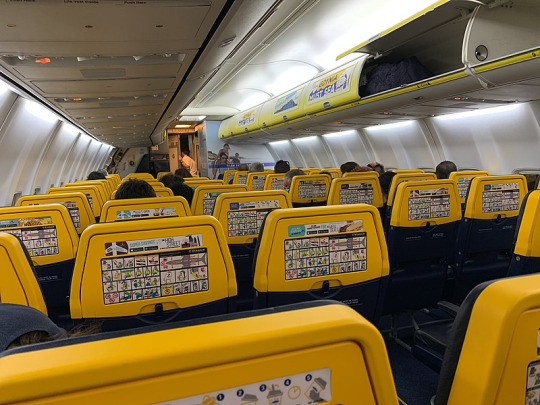
image: Robot8A This is the interior of a Ryanair plane. Note the safety cards attached to the seatbacks due to the lack of pockets, plus additional adverts on the seatbacks and overhead bins like this is a sports match in a massive stadium. It's also just quite ugly.
Fundamentally, Ryanair is just perpetually doing Ryanair things. Why is Ryanair? Because Ryanair is one giant publicity stunt. A couple of people answered my question by referencing the CEO saying he'd like to charge people to use the toilet, and that's sort of true in the sense that he's said he'd like to do this, but he's always been pretty clear that it's a publicity stunt:
Short of committing murder, negative publicity sells more seats than positive publicity.
Like, it's a bit. He's doing a bit. He's 100% in on the joke. For every one of the more particularly insane claims, like charging to use the toilets, he's outright denied it. Even some claims that are pretty borderline are ones he's contradicted at other points. He's a legitimate bigot who's created one of the most nightmarish work environments out there and just wants to suck money out of people by any means necessary, and he's indefensible, but that's not really what people talk about when they talk about Ryanair. They talk about charging for toilets.
Charging for toilets continues to be the number one story that resurfaces in the press and it’s the gift that keeps on giving. We’ve never done it, but it keeps coming up on social networks every three or four months, the media picks up on it and then someone writes a story on it.
Which I think is misplaced effort when he's also, for instance, a climate change denier who forces disabled passengers to pay for wheelchairs. And I don't believe for a second his climate change denial is based on legitimate convictions - he just doesn't want to have to spend more money. He would absolutely knowingly feed the world into an incinerator if it lowered costs.
Anyway, here is a picture of him having his face violently introduced to a pie.
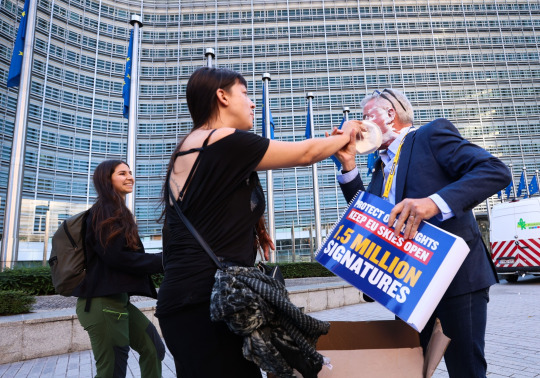
image: Olivier Hoslet
All of this said, there's no such thing as an ethical airline - he's just playing it up to the extreme for essentially business clickbait.
I feel like the best example of Ryanair's general...Ryanairness is their Twitter account, which I have a sneaking suspicion Michael O'Leary runs himself to save money. It's mostly composed of firing back at complaining customers, Formula 1 opinions, and jabs at everyone from Boris Johnson to the British Museum. (Heartbreaking: the worst person you know just made a great point.) Their description, 'we sell seats, not windows', references the frequent complaints about seat 11A, which does not have a window. (To be fair, their website does warn you about this.) Their weird window situation actually generated my all-time favourite Ryanair tweet.
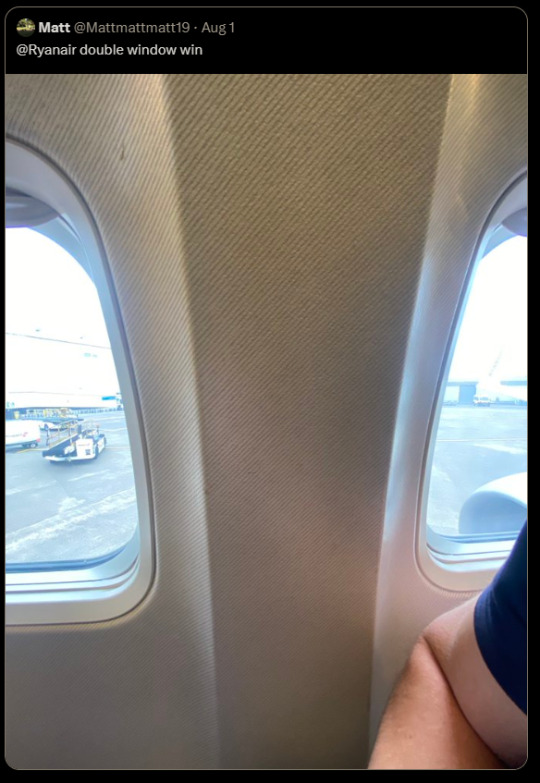
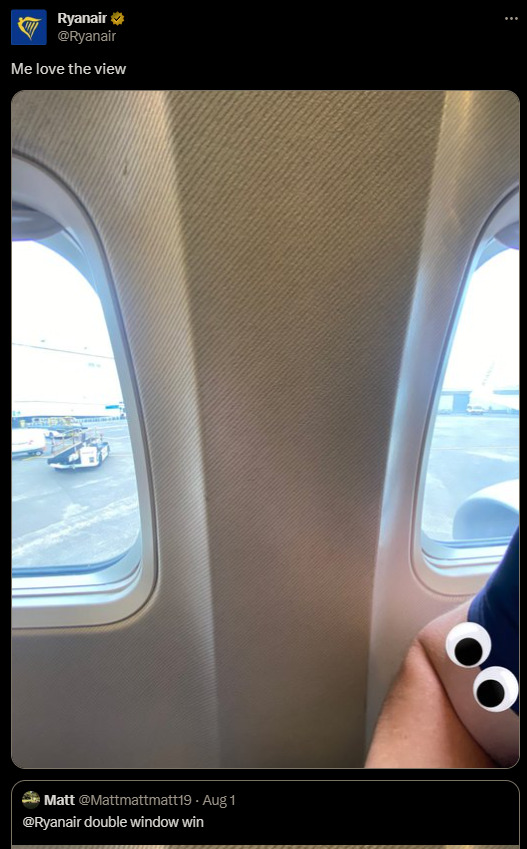
Here are some other winners.
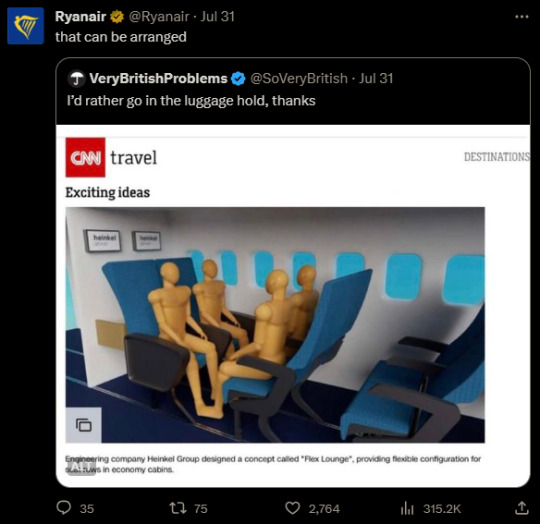
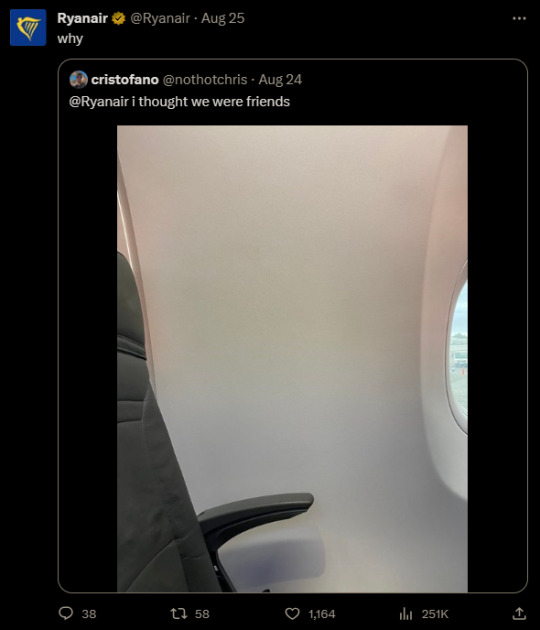


No, seriously, I think Michael O'Leary might be writing these. I also really don't know how to feel about the fact that it appears someone at the airline - potentially O'Leary himself - has made an edit of a yassified Ryanair plane.
But at the end of the day, it's Ryanair. O'Leary himself has described aeroplanes as "a bus with wings on". As one individual tweeted,
THANK YOU to [Ryanair], for letting me see Europe for Feck All
and that's why I do think I genuinely have primarily positive feelings about Ryanair as a product rather than a company - you truly do see Europe for Feck All. (O'Leary has claimed both that he would introduce $10 transatlantic tickets to the US, and that he would make tickets literally free and make all profits from ancillary fees - while neither has yet happened, it takes one hell of an airline to claim that it's on the table.)
Ryanair isn't affordable, it's dime store. It's an airline you bought from Wish.com. It's the free pen you stole from a cup of identical pens at the bank which stops working within days. You're not just in steerage, you're on a tramp steamer. You get exactly the misery you pay for, and you go from one place to a different place.

And it's worth noting that Ryanair has at least one positive feature - safety.
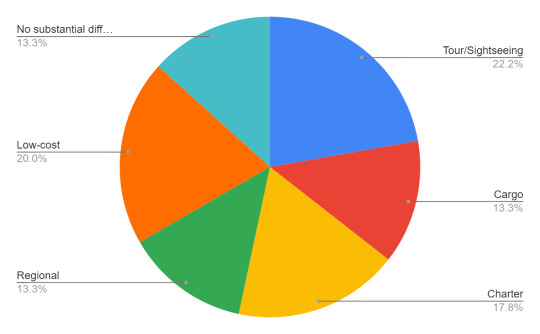
When I ran my first questionnaire I asked respondents what type of airline they thought was most dangerous. Other than what's shown there was also an option for mainline full service carriers; unsurprisingly, nobody chose this. There were 50 respondents but 5 declined to answer this particular question, so the sample size isn't really significant enough to draw any conclusions from, but it's what I have. (I kind of wish I could stop to re-run this with my current follower count, but this post is actually a request. No, not for my wonderful beloved followers - for my dentist. Not joking. Thank you for making my teeth not have holes in them.)
20% of respondents indicated that low-cost or ultra-low-cost airlines probably had the worst safety records and practices. It's completely understandable why someone would think this, but without going into the actual statistics of plane crashes this simply isn't true, and in fact they're the safest category on here. While it obviously depends on the specific airline, low-cost carriers as a category are no less safe than mainline carriers. This is despite the fact that they tend to fly shorter flights and thus they operate more takeoffs and landings, which are the points in a flight where the majority of crashes occur.
How does that make sense? Well, part of it is that the airline industry has gotten very close to eliminating accidental crashes via innovations in technology and an incredible safety culture built on years of hard lessons. The world has paid in blood for crew resource management and GPWS, but it has paid, and now the sorts of crashes that would have been unremarkable just 20 years ago are completely unthinkable. Actually, in the 2010s it's quite possible more people were killed by planes brought down deliberately than accidents. But beyond that, the costs low-cost airlines cut tend to be ones that aren't safety-critical. They tend to operate shiny new fleets (better fuel efficiency, purchased in bulk) with large maintenance teams (shorter turnaround and less planes grounded for long periods of time) at less congested airports (lower operating fees) and indeed when I think about famous accidents that involve massive cutting of corners it's nearly always full-service airlines, save for egregious examples of low-cost industry pariahs out of business within a few years. Focusing on eliminating operating costs by making the passenger experience cramped and miserable allows for pouring all your budget into running a smooth and well-oiled operation.
The axiom "if you think safety is expensive, try a crash" is often attributed to EasyJet founder Stelios Haji-Ioannou. And it's true. Beyond the cost of writing off a plane, of financial compensation to survivors and families, of lawyers and PR, of having to update your operation to make sure it never happens again...as O'Leary himself said, all press is good press...short of murder. A heinous, clearly negligent crash, on the other hand, can kill an airline as easily as it can kill people. It has done in the past and that threat will never stop being there. Airlines go out of business all the time for any number of mundane financial reasons. In many cases margins simply do not allow for something like a crash. Crashes have even ended the lives of deeply historic, beloved, well-established nationalized flag carriers, so this particular sword of Damocles could cut Ryanair's control cables just as easily. And they've managed to avoid this fate, with zero passenger fatalities and only one written-off airplane - the 2008 crash of flight 4102, caused by a birdstrike during landing.
And I'll be honest, "miserable and safe but a tenth the price of a train ticket from Boston to New York" (I am unfortunately not exaggerating) is a pretty appealing package to my non-millionaire self.

...so why do their planes look like this? I'm dead serious, it vexes me. I don't know what to make of this. Hey, did you remember I'm an airline livery review blog? Look, I can't help myself. Low-cost carriers as a topic, and how they're viewed, is probably the most interesting facet of the aviation industry to me. I feel like if I had infinite time and resources I might genuinely sit down, hit the databases and archives, run a few studies, and write a book about it - it's fascinating, and low-cost carriers are something that only economists and businesspeople seem to want to talk about. I think it's about time someone approached them through a lens of history and social psychology. There's not really academic value to what I do here, on Runway Runway, my tumblr blog where I call Lufthansa planes ugly, but if something doesn't exist I will create it even if my sample size is 50.
So how about how they're literally viewed - like, what their planes look like? Well, here are some low cost carriers I've reviewed. Notice something? They're bright and eye-catching. They don't take themselves too seriously. They're fun. The original low-cost carrier literally painted big smiles on their bright pink and orange planes.

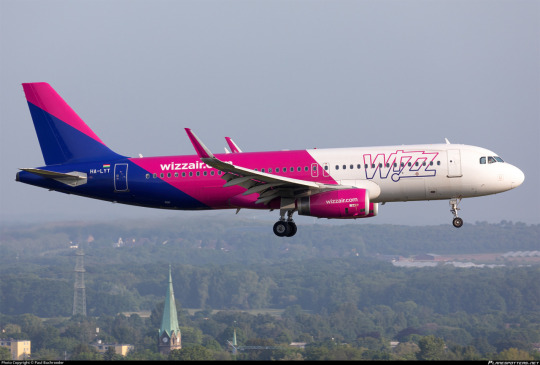

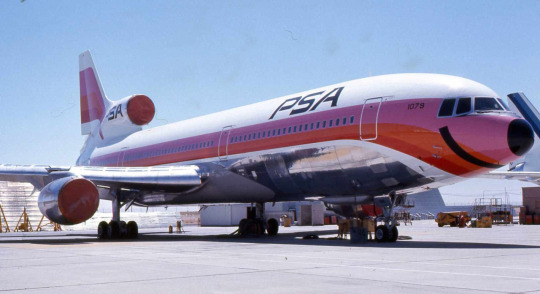
Okay, yes, they don't all look like this. WestJet and IndiGo, for example, are fairly normal-looking. And there are full-service carriers like TAP Air Portugal (and condor. Absolutely condor.) that I would say have a pretty low-costy look to them. There is nothing wrong with that. Low-cost liveries are frequently colourful and exciting, with much more thought put into distinctiveness and charm instead of a passionless appeal to dignity. Indeed a lot of my most highly esteemed liveries, including all the ones pictured above, are low-cost airlines. GOL, for example, is a snappy, eye-catchy design in bright colours that's clearly not meant to look expensive. The same goes for Breeze Airways. There's even more examples out there I've yet to touch on, like EasyJet; ValuJet; Scoot; Spirit Airlines; Frontier Airlines; PLAY (and the late WOW air); Volotea; airasia, so on - to be dignified or clean is not the goal here. Even the names of low-cost carriers frequently are very hastily stapled together and generic, like EasyJet or Super Air Jet or Wings Air; JetSmart; SkyUp; Smartwings; FastJet; Sky Airline (just one!); MYAirlines; the classic ValuJet; flyadeal; and the legendary jet2.com, making no attempt at all to seem as if they have a legacy to fall back on. And there's even more out-there specimens, like Mango or even Nok Air. Many of them have specific themes, like Batik Air, Tigerair, or Buzz, which isn't something you see on full-service carriers, which brand themselves on national identity and the promise of luxury and good service - which is boring. Low-cost airlines, if they want to succeed, have to do something to make people remember they exist.
This is the fundamental shape taken by the low-cost product, which operates with few laurels to rest on and a mission of getting people to remember their website at any cost. Much like a can of Arizona iced "tea" guaranteed to cost ninety-nine cents, literally cheaper than a bottle of water, the package it comes in makes no attempt to look classy. And I am a heavy tea drinker who considers myself fairly discerning, whose favourite type of tea is gyokuro yamashiro (which is absurdly expensive), but you literally can't beat Arizona! It's potable and it's ninety-nine cents and it sort of resembles tea if you don't think too much about it and Massachusetts summers are surprisingly hot and the can is pretty and colourful. Sure, I'd rather have Ito En, but that costs normal money and Arizona costs 99 cents, and sometimes that's all I really have, and it gets the job done even if my teeth aren't enjoying the experience. A Wizz Air plane is a can of Arizona iced tea. It is ninety-nine cents and potable.
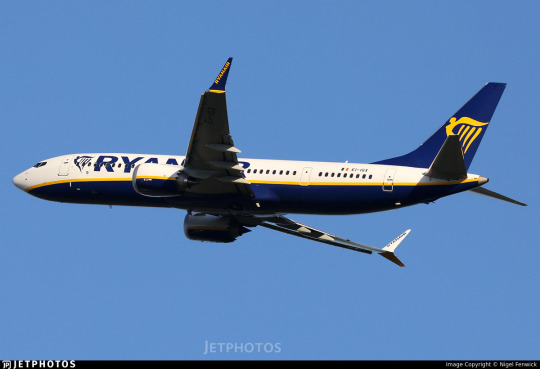
This isn't Arizona, this is a box of Darjeeling from Harrods. Ryanair outfits their fleet in handsome navy blue and gold. Their logo, an outline of a woman with harp-like wings taking flight, is simple yet elegant, and that feels so very wrong. I actually asked in my questionnaire what the colours of the Ryanair livery were, because I had seen people expressing casually that they weren't sure they could recognize so much as a Ryanair logo, and the results aren't worth showing in a chart because they're basically as good as random. I do want to specifically appreciate the person who answered "I don't remember but it must be whatever the cheapest colour of airplane paint is", though.
But the truth is that they have such a rich palette, and I do mean that in the sense of 'wealthy'. A deep royal blue paired with a saturated gold used as a sparing trim, these are the colours of an overstuffed plush armchair, not a budget airline. Aside from the name on the winglets and the giant billboard wordmark there is nothing, and I mean nothing, that is typical for a low-cost airline. This is not garish advertising, this is stately.
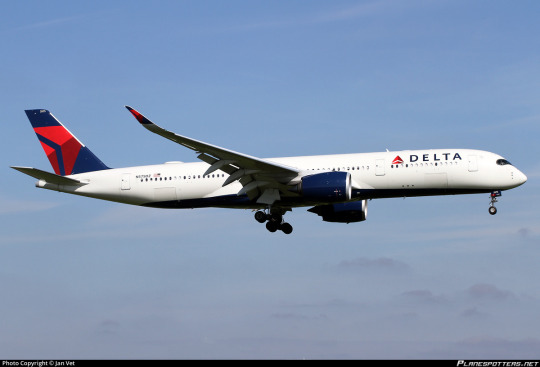
The layout itself is what I call "Deltalike". Delta certainly did not invent this style of livery but they are the carrier I associate most with it, likely due to the fact that I live right by one of their hubs. The Deltalike is a white plane with a painted tail unconnected to the main fuselage body, painted winglets, painted engines, and a painted underbelly large enough still be visible when viewed directly from the side. While a 'true' Deltalike uses a consistent palette for the engines, tail, and underbelly, there is significant variation. The detached tail is, in my opinion, the harbinger of the Deltalike, and I call liveries with an incomplete presentation of Deltalike features Deltalites.
This scheme is not as common as the Lufthansa Line variants but it is still very common, with its popularity probably peaking in the 2010s. Some examples of the true Deltalike include Air Canada, 2006 Icelandair, Azul, the old GOL livery, and jetBlue. Some colour-varied Deltalikes are the old Flair livery, the SAS red engine livery, and British Airways. An example Deltalite is the old Croatia Airlines scheme, which has a painted tail and belly and engines that are sort of painted. Sure, the engines are just grey and a bit of the tail extends onto the body, but it's got the colour concentrated in the right place and it has the painted belly, it's a Deltalite. A lot of liveries have painted engines and detached tails but no painted bellies, and I do consider these to be on the far end of the Deltalike spectrum, but they aren't what I mean when I refer to a Deltalike. They're what brown dwarves are to actual stars - related but not really the same.
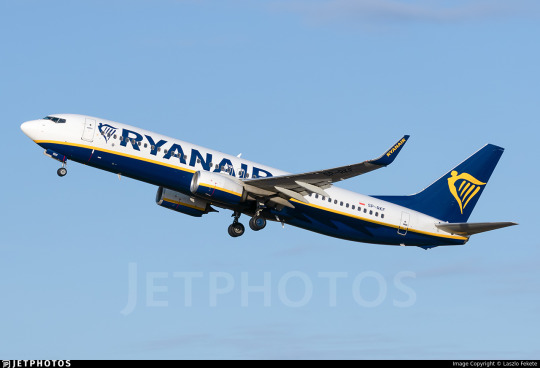
Ryanair is a true Deltalike, but I would even call it an elevated Deltalike. The gold trim, like the cord adorning the hems a of a thick brocade smoking jacket, has an effortlessly shallow curve as it trims the rich blue underbelly, larger than that of a typical Deltalike and with a very deliberate shape to it which at the rearmost point covers half the fuselage by height but fades away to a sort of goatee at the front. This is not a plane which sat in a puddle of blue but an intentional cloak impeccably positioned, visible not just from the side but from the front. The engines, instead of being plain or just one colour with a website printed on, large and garish, are the same white and blue with yellow trim, the last traces of the setting sun melting into a glassy deep blue ocean below a stark white sky with which it inexplicably coexists. Sure, the detached tail still looks bad, it always does, but you can ignore it at most angles.

From below the dark blue creates that distinct cetacean effect, a certain brightness-inverted countershading effect, similar to what you see on airlines like KLM and other blue-side-up liveries. The underside doesn't have a huge, legible logo, visible even from the ground on final approach. One of the defining features of the low-cost livery, in my mind, is a large, prominent website. It's tacky and a little pointless (I mean, surely they can Google your airline's name if your wordmark is large enough) but it is downright ubiquitous. Even full-service carriers frequently heavily feature their website, but it's nowhere on a Ryanair plane. That's so, so incredibly weird.
Just...think about it. Their entire identity is outrage marketing. They are the xQc of airlines - bigoted, constantly in the news, and obnoxious. And nobody remembers what their livery looks like because it doesn't look obnoxious. This is like if MrBeast's thumbnails were lovingly curated aesthetically pleasing shots of scenery that could pass for screenshots from an actual film. It's not tacky and cheap and it's not generic and cheap, it's elegant and cheap. And of all airlines to look like this...Ryanair? Seriously? Ryanair?
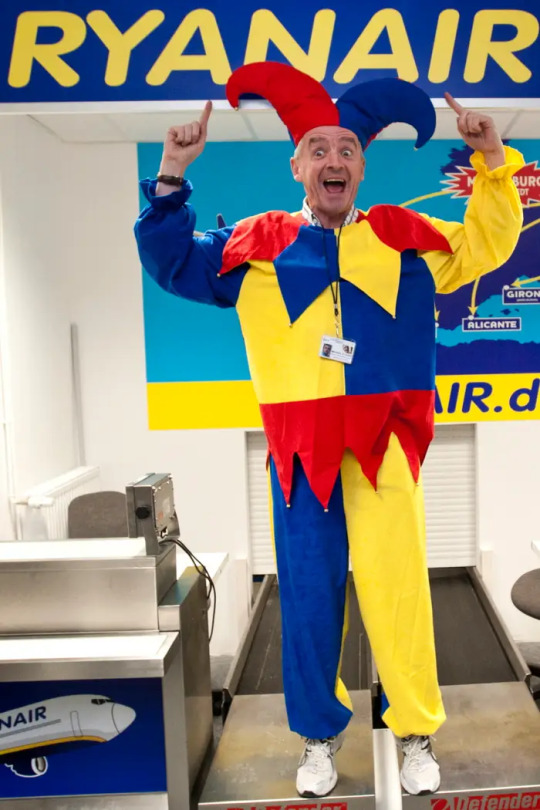
image: Associated Press
The CEO.

The airplanes.
Do you see what I mean? Do you see why I find this deeply strange? This is not a clickbait plane. This plane is downright unclickable. It has never been clicked. I bet if I covered the name up and showed it to people (again, I wish I'd had the time to do this) I could fool people into thinking this is like United. Hell, I've learned from my other survey that the average person clearly knows less about liveries than I, the Joker of liveries, do, and can't identify basically any from memory. I could probably fool at least one or two people into thinking this is Singapore Airlines. I may try this on a few co-workers and then get back to you.
How did we get here? I have no clue. While Ryanair did start out as a charter carrier rather than a low-cost airline, and they always had blue and yellow as their colours, their very early liveries were just white planes with wordmarks.

This livery seems to have appeared very early in the history of low-cost Ryanair. Unfortunately, I can't date it precisely - the only thing I can say is that the earliest photograph I could find in this livery was from 1994. Based on the fact that their planes were photographed in different liveries right up to then, including this very brief TAM-like BAC 1-11 livery, I think 1994 is most likely the point they committed to it.

Oh, Adam Rowden, what a different world you lived in.
Even for 1994 this is a pretty conservative livery. Sure, this was before the real boom of bright and venomous flying billboards, but it's still strange. And Ryanair is no stranger to literal flying billboards in the form of logojets for such companies as Vodafone and Hertz, often sort of hideous ones, though I imagine these days nobody would ever want to associate with them like that.
And they never changed it, except that they did - to the modern, softer curve. This I can pinpoint with much more accuracy. It was changed in mid-2003 as new aircraft were delivered, while the older livery was phased out together with the secondhand airframes which wore it. I do not understand this at all. If any airline were to just make the decision to go full circus tent and be as garish as possible it should be Ryanair, right? Ryanair is a brand incapable of cowardly behavior. But they look far more sober than even the average modern flag carrier livery. I guess they don't think they need an eye-catching livery, but I just don't buy that as a full explanation. Imagine the news they'd make for introducing something truly heinous. I think their genuine best move would just be to put a huge picture of Michael O'Leary's face, blown up massively and poorly aligned with visible JPEG artefacts, all over their fuselages. All of Europe would be furious. So why? Why is this the situation?
So what's the verdict? This may be the hardest decision I've made so far. The options here range widely. I'll lay them out.
If I were rating this based on pure visual appeal, I would give it a B-. I am dead serious - this is a visually pleasing, well-balanced livery, simple yet elegant. The detached tail is my only major complaint. But I think Saudia's planes are quite pretty and I graded them low because I think they fail at representing their airline or having a distinct identity, so this cannot be my sole criterion.
I almost want to give them an F because of just how un-Ryanair they are, like how Copa's livery is literally not the Copa livery, but that feels wrong because that's still the Ryanair livery, it's not just a refusal to design a livery at all.
Do I marry these two into a tepid union destined for either divorce or a dramatic act of arson after a seeming eternity of languishing in mutual dysfunction in Tallahassee? I really don't want to do that, because attempting to balance these factors betrays the fact of their contradiction, the mental strain I've been afflicted with over this simple, pointless choice with zero consequences except maybe one of my followers disagreeing with me, which is fine. Unlike certain individuals I will not call you swear words and say you're an idiot.
The final option is maybe my least favourite of them all, because it's capitulation. It's admitting Ryanair is special, just the most annoying golf-ball-sized hailstone in the blizzard of absurd and comical frustrations which is the airline industry. But I just don't know what to make of this miserable little pest, this plague on the patience and knees of the traveling public.
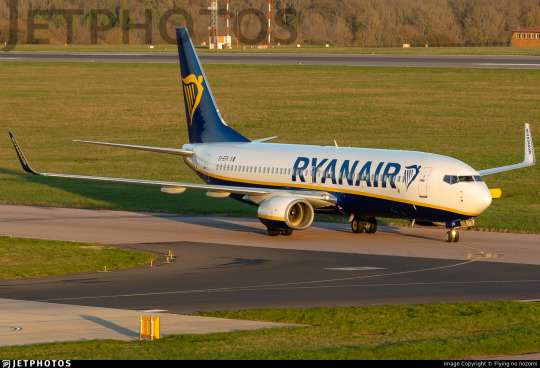
Z. FUCK YOU IT'S RYANAIR.
It defies categories by being good, but being Ryanair. I hate that. I hate it, I hate their beastly little CEO, and I dislike that their planes are sleek, elegant, and could easily pass for an airline that doesn't instruct stewardesses to kick their passengers' shins as they walk down the aisles. If I am buying a ten-euro plane ticket I do not think the plane should look like this, teleologically speaking. At the end of the day I just have no better way to quantify my feelings.
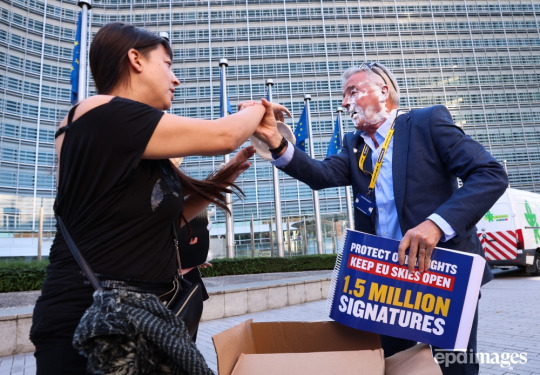
Prick.
#tarmac fashion week#grade: z#era: 1990s#era: 2000s#era: 2010s#era: 2020s#region: europe#ryanair#low cost carriers#ulccs#deltalike#cabin fever#long haul#questionnaire 1#questionnaires#double sunrise#yeah I guess. it goes in that tag sure
136 notes
·
View notes
Text
Valentine's Day Bingo: Stillwater - Stuart Scola x Reader

Tagging: @trublu2u @greenies-green @burningpeachpuppy @upsteadlogic @malindacath @yezzyyae @noxytopy @district447 @soultrysworld
Prequel to Unruly (NSFW) - You get a little territoral when it comes Stuart.
Hitting the Secret Admirer Bingo Square

When the bottle of Stillwater whisky is delivered to the house on Valentine’s Day, Stuart assumes that it’s from you. You’re away in Europe, teaching explosives training to the police force in Budapest. You’ve been testing the waters, exploring more options outside of the field since the pregnancy scare a couple of months ago. It had brought up the topic of kids and whilst you weren’t ready yet, you’d started to think about it. Stuart thought at some point in the next few years the two of you may be starting your own little family.
You blew the budget, he texts you before sending a picture of himself holding up the gift.
This bottle alone costs almost five hundred dollars and he’s touched. You refuse to dip into the joint account, you’re far too independent to spend the cash he earned at Goldman Sachs despite the fact he’s told you it’s there for the both of you.
It isn’t until the late afternoon he gets the message back from you.
That isn’t from me. Maybe a wrong delivery?
He knows that can’t be true. He’d had to sign for that package, it was his name and address on the paperwork.
Yea maybe, he texts back because he doesn’t want to worry you.
You respond with a picture of yourself in City Park giving him a thumbs up. He can see agents Kellett and Vo in the background, holding takeaway cups of coffee. He finds himself smiling because you look so vibrant in that moment, so happy and relaxed. Travelling suits you he thinks, the two of you haven’t done enough of it. He makes a mental note to book a trip when you get back, maybe Barcelona or Madrid, somewhere warm to balance out the harshness of the New York winter.
It’s when he steps out of the shower that the doorbell goes, he throws on his sweats and a t-shirt. The fabric clinging to his damp skin as he pads towards the door in bare feet. He’s surprised to find Armando, the delivery driver from his favourite restaurant Villa Valencia outside, a brown paper bag of food clasped in his hand.
“I didn’t order anything.” Stuart tells Armando as the other man hands the bag to him.
“Your girl did, she called it in about an hour ago” Armando informs him, already halfway down the steps. “She said someone should be taking care of you on Valentine’s Day.”
There’s an apprehension in his chest as he sets the bag down on the kitchen table, he picks up the delivery receipt and it’s a list of all his favourite food. Nowhere on the bill does it mention the name of the person who called in the order. He checks the time on his phone, it’s two am in Budapest, there’s no way that was you who bought his food. He dumps the takeaway bag straight in the trash.
The whiskey and now this…
It makes him uneasy. He double checks the doors and windows before he goes to bed, making sure they’re locked.
When he wakes up the next morning it’s to the scent of freshly brewed coffee. The aroma assails him and he reaches for his gun on the nightstand because he knows there isn’t a chance in hell that it’s you. You aren’t due home for over a week. Even if you’d decided to surprise him, a flight from Budapest is almost twelve hours direct, you wouldn’t be here in time for his alarm to go off.
When he steps into hall, he can hear music playing in the kitchen. Something soothing and soulful. It reminds him of the music in the coffeeshop the two of you used to frequent, the one down the block. There’s someone singing along to the song, the voice is too low for him to recognise.
He uses his palm to slowly push open the door, his gun raised. He’s surprised to find a woman standing with her back to him, she’s wearing one of his shirts and very little else. There’s a breakfast tray he doesn’t recognise in front of her. He sees the cappuccino with coffee art heart set into the foam, the toast on the side, the dainty little flower she’s placed in one of his glasses. There is no doubt in his mind, she’d intended to surprise him in bed this morning.
When she turns about to face him, he recognises her immediately and he knows exactly why this is happening.
There’s a reason you’d both stopped visiting that coffeeshop. You’d left him last year after the Mad Bomber had been released, disappeared for a few months. You’d both fucked other people in that time, falling back into old habits.
One of them had been the perky barista from the coffeeshop. She’d always paid him a little extra attention even when he came in with you. You had joked about it once upon a time, how she always left little hearts in his coffee but never in yours. She’d noticed when you stopped coming in, that he was hungover most mornings. Bad break up he’d told her. He’d bumped into her in a bar a couple of days later, gone back to her place. He’d slipped out of the sheets in the early hours of the morning the same way he did with everyone woman before and after you. He’d been upfront with her at the time.
I’m not looking to replace her, he’d said talking about you. This is just a one night thing.
He’d seen her around since then, the grocery store, one of the bars down the block, at the subway. It had stopped when you’d come back onto the scene. He’d told you about the girls he’d fucked, and you’d shared your own stories. There were a couple of overlaps, for him the barista, for you Nestor Vertiz. You’d steered well clear of them both since, neither of you wanted your past indiscretions rubbed in the other’s face.
The worst part is he can’t even remember her name.
“Scola, you still there?” Tiffany’s voice is in his ear, as he grips the phone in one hand and his gun in the other.
He’d dialled his partner before he’d left the bedroom. She’d already been seated at her desk in 26 Fed, getting a head start on some paperwork when he’d called her.
“Yea Tiff.” He says quietly, his eyes still trained on the barista. “I need you to get a unit over here, there’s a woman in my house.”
Love Scola? Don’t miss any of his stories by joining the taglist here.
Interested in supporting me? Join my Patreon for Bonus Content!
Like My Work? - Why Not Buy Me A Coffee

29 notes
·
View notes
Text

airsLLide No. 24077: HB-JVA, Fokker 100, Helvetic Airways, Zürich, January 10, 2005.
Helvetic was initially formed as a low-cost carrier based out of Zurich, and the plan was to quickly grow it to a fleet of fifteen former American Airlines Fokker 100s serving destinations all over Europe. Helvetic was hoping to score against its much larger competitor Swiss International Air Lines as the latter was struggling under an oversized fleet and labor woes, due to a hefty dispute on seniority between former Swissair pilots taken over by Swiss after Swissair's grounding, and native former Crossair pilots that stayed with the company through its impromptu conversion from regional feeder Crossair to Switzerland's new intercontinental flagcarrier.
However the business model of Helvetic did not develop as planned, despite its eye-catching livery in all-magenta. First, Lufthansa stepped in with competitor Swiss Internaitonal and started acquiring stakes with the aim of turning it into a 100% subsidiary, while secondly, the travelling public was not as enthusiastic about the new venture as hoped for and rather continued relying on established low-costers operating out of neighbouring Basel/Mulhouse airport, such as EasyJet. Thus, Helvetic's plans of growth were stopped with the arrival of the seventh Fokker 100, a new investor was sought (and found), and the business model was gradually shifted to offer full-service scheduled flights on niche routes and to provide ACMI work for Swiss - a business model Helvetic follows to the present day, albeit now with a fleet of Embraer 190/195-jets.
4 notes
·
View notes
Text

One in four chance per year that rocket junk will enter busy airspace
There’s a 26 per cent annual chance that space rocket junk will re-enter the atmosphere and pass through a busy flight area, according to a recent UBC study.
While the chance of debris hitting an aircraft is very low, the research highlights that the potential for uncontrolled space rocket junk to disrupt flights and create additional costs for airlines and passengers is not.
Space junk disrupting air traffic is far from unheard of. In 2022, a re-entering 20-tonne piece of rocket prompted Spanish and French aviation authorities to close parts of their airspace.
And with rocket launches and flights increasing, UBC researchers say policymakers need to take action.
“The recent explosion of a SpaceX Starship shortly after launch demonstrated the challenges of having to suddenly close airspace,” said first author Ewan Wright, an interdisciplinary studies doctoral student at UBC. “The authorities set up a ‘keep out’ zone for aircraft, many of which had to turn around or divert their flight path. And this was a situation where we had good information about where the rocket debris was likely to come down, which is not the case for uncontrolled debris re-entering the atmosphere from orbit.”
When objects such as satellites are launched by rockets into space, large portions of the rockets are often left in orbit. If these leftover rocket stages have a low enough orbit, they can re-enter the atmosphere in an uncontrolled way. Most of the material will burn up in the atmosphere, but many pieces still hurtle towards the ground.
Rocket launches, flights increasing
The researchers used the number of aircraft on the busiest day of 2023 and matched it to the probability of rocket pieces re-entering above various levels of air traffic, calculated using a decade of data. Denver, Colorado had the highest density of air traffic on that day, at about one aircraft every 18km2.
Using this as their peak, they calculated the probability of rocket junk re-entering the atmosphere over different air traffic density thresholds. When they looked at regions that have 10 per cent of the peak air traffic density or higher, for instance—the type of activity seen in the airspace over Vancouver-Seattle—they found a 26 per cent chance per year of rocket junk re-entering in that type of airspace.
“Notably, the airspace over southern Europe that was closed in 2022 is only five per cent of the peak. Around the world, there is a 75-per-cent chance of a re-entry in such regions each year,” said Wright.
There were 258 successful rocket launches in 2024, and a record 120 uncontrolled rocket debris re-entries, with more than 2,300 rocket bodies still in orbit. Air passenger numbers are expected to increase by almost seven per cent in 2025, according to the International Air Transport Association.
Space industry exporting risk
The researchers also calculated the annual probability of space rocket junk colliding with an aircraft at one in 430,000.
When space rocket junk enters into busy air space, aviation authorities either roll the dice and allow flights to continue or act by diverting flights or closing airspace. “But why should authorities have to make these decisions in the first place? Uncontrolled rocket body re-entries are a design choice, not a necessity,” said co-author Dr. Aaron Boley, associate professor in the department of physics and astronomy. “The space industry is effectively exporting its risk to airlines and passengers.”
Rather, the industry could use rockets that are designed to re-enter the atmosphere in a controlled way after use, crashing harmlessly into the ocean. This solution requires collective international action, said co-author Dr. Michael Byers, a UBC political science professor. “Countries and companies that launch satellites won’t spend the money to improve their rockets designs unless all of them are required to do so,” said Dr. Byers. “So, we need governments to come together and adopt some new standards here.”
3 notes
·
View notes
Text

Airbus A321 Air Canada Rouge
Registration: C-FJOU Type: A321-211 Engines: 2 × CFMI CFM56-5B3/3 Serial Number: 6873 First flight: Nov 13, 2015
Air Canada Rouge is a subsidiary of Air Canada, offering low–cost tourist flights. Rouge was founded in December 2012 to help the parent company compete better with rivals such as Air Transat and WestJet.
Air Canada operates several subsidiaries and Rouge is the largest and is a separate airline, but is fully integrated into the Air Canada network. Rouge is an affiliated member of the Star Alliance.
In July 2013, Rouge began operating flights, and the first destination was Kingston, Jamaica. The flight was operated from Toronto. At the time of launch, the airline's fleet consisted of four aircraft transferred by the parent company: two Airbus A319 and two Boeing 767. In the first 18 months, the Rouge fleet grew to 28 aircraft.
Since the spring of 2014, Air Canada Rouge has expanded its operations in Western Canada and began serving primarily tourist destinations in Los Angeles, San Francisco, Las Vegas, Phoenix, Palm Springs, Honolulu, Maui and Anchorage. By September 2016, the company's fleet consisted of 19 Boeing 767 aircraft, and Rouge began operating seasonal flights, first to Japan and then to Europe.
The difficult years of the pandemic came, and the airline's rapid growth stopped. Air Canada has begun urgently decommissioning aircraft from its main fleet and the Rouge fleet. A total of 79 aircraft were decommissioned. As a result of the reduction, the airline lost all twenty-five Boeing 767s and two A319s. From February to September 2021, Rouge flights were suspended, in accordance with new official restrictions that reduced the volume of unnecessary movements.
Fortunately, Air Canada Rouge survived, despite the loss of long-haul international destinations to Europe and Japan. Currently, Rouge operates only narrow-body aircraft of the Airbus A320 family, with a total of 37 aircraft. The company serves tourist destinations in the Caribbean, Central America, and some destinations in Mexico and the United States.
Poster for Aviators aviaposter.com
#airbusaircraft#airbuspilot#Airbus321#a321#aircanadarouge#profileprints#planepics#pilotlife#avgeek#aviation
3 notes
·
View notes
Text
Section 1: Planning Your Budget Vacation
1.1 Setting a Budget
Establish a clear budget for your trip, factoring in transportation, lodging, meals, and activities. Use budgeting tools or apps to keep track of expenses and prioritize your spending.
1.2 Researching Destinations
Some destinations offer more value than others. Research places known for their affordability, such as Southeast Asia or Eastern Europe, and consider traveling during the off-peak season to save on costs.
1.3 Travel Tips
Utilize travel apps and websites to compare prices. Set alerts for flight deals and be flexible with your travel dates to take advantage of the best rates.
Section 2: Finding Affordable Accommodation
2.1 Types of Budget Accommodation
Explore a variety of budget options including hostels, motels, and guesthouses. Look into vacation rentals that can offer more space and amenities for families or groups.
2.2 Best Platforms for Booking
Platforms like Booking.com, Hostelworld, and Airbnb provide a range of options. Learn to navigate these sites effectively by using filters and sorting features to find the best deals.
2.3 Unique Stays on a Budget
Consider unique lodging options such as glamping sites, houseboats, or tiny homes. These can provide memorable experiences without a hefty price tag.
Section 3: Affordable Vacation Packages
3.1 Understanding Vacation Packages
Vacation packages often combine flights, hotels, and sometimes activities at a lower cost. Understand how these packages work to maximize your savings.
3.2 Where to Find Deals
Research travel agencies that specialize in budget trips, and don’t forget to check out last-minute deals on various travel websites.
3.3 Tips for Creating Your Own Package
Learn how to bundle flights and accommodations effectively. Use examples to demonstrate how to save by planning your own itineraries.
Section 4: Activities and Attractions on a Budget
4.1 Free and Low-Cost Activities
Highlight free activities available at your destination, such as hiking, city walking tours, and local markets.
4.2 Discounts and Passes
Promote the idea of city passes that offer discounts on attractions and public transport. Share tips on how to take advantage of student and senior discounts.
4.3 Making the Most of Your Destination
Encourage travelers to explore local cuisine through affordable street food options. Highlight the importance of connecting with locals for insider tips on budget-friendly activities.
Section 5: Travel Hacks for Saving Money
5.1 Transportation Tips
Provide tips for finding cheap flights, such as using budget airlines or flying during off-peak hours. Explain how to navigate public transportation in new cities.
5.2 Packing Smart
Offer advice on packing light to avoid baggage fees and the importance of bringing essential items like reusable water bottles and snacks.
5.3 Money-Saving Apps
List apps that help travelers save money, such as Skyscanner for flights, HotelTonight for last-minute hotel deals, and GasBuddy for road trips.
Section 6: Real-Life Success Stories
6.1 Case Studies of Affordable Trips
Share inspiring stories from travelers who managed to explore new destinations on a budget. Include their favorite tips and tricks.
go for more @towardsway.in
2 notes
·
View notes
Text
Benefits of Paid Education in Lithuania

Benefits of paid Education in Lithuania
A small European country, Lithuania is home to nearly 50 higher education institutions. Higher education institutions have many faculties including Engineering, Medical, Humanities, Economics, Management and Many more. University degrees are offered in three cycles. The first cycle is undergraduate ( Bachelor degree ) The second cycle is graduate ( Master and specialized professional studies ). The Third cycle is Postgraduate ( Doctoral).
There are two types of higher education institutions in Lithuania, colleges and universities. Collegesare focused on practical training for particular professions. Bachelor degrees and professional qualifications are offered at universities. There are 23 universities and 24 colleges in Lithuania. In comparison to other European countries, it is a quite big number.
Low Tuition Fee
The tuition fee is quite affordable for international students. The tuition fee is refundable if you cannot attend university due to any reason. Tuition fee varies between 2000 EUR to 5000 EUR per year. .As compared to many EU countries, International students pay very low tuition fee for bachelor’s and master’s degree courses.
100% success rate for Visa
What about the chance to get a visa for Lithuania? In recent time, Lithuania has a 100% success rate for visa applications. So, you can apply for a study visa in Lithuanian Embassy in your country due to its high acceptance rate of international students.
High-quality education
Lithuanian universities are renowned for providing top-notch education. They consistently rank among the best universities in Europe, and employers highly value their graduates. Many universities in Lithuania offer English-taught programs, making it an excellent choice for non-Lithuanian-speaking international students
High quality of life
What’s great is that the low costs translate to a comfortable standard of living in Lithuania. It’s easy to get around as public transportation is inexpensive and widely available. There are numerous leisure and sports activities, as well as accessible public parks and amenities. The country is famed for its clear lakes and verdant pine forests, but also for developing a wide range of green products. On top of that, you will be able to keep safe and healthy thanks to world-class health infrastructure and expertise.
Travel around Europe while studying in Lithuania
Given its location, studying in Lithuania can be your gateway to the rest of Europe. Lithuania is bordered by Latvia, Belarus, and Poland, and isn’t too far away from Germany and Denmark. You can find flights to major European destinations at the Vilnius and Kaunas airports, or take advantage of the well-connected railway network. This way, you can get pop over to Paris one weekend and Amsterdam the next.
Contact us : 8428440444 , 8428999090 , 8608777070
Mail ID : [email protected] , [email protected]
#study in lithuania#paid education#unilife abroad career solution#benefits studying in lithuania#benefits of paid education
2 notes
·
View notes
Text
I actually hate flying. Like I’m not afraid but it’s just a goddamn nuisance and it pisses me off specially when low cost flights are more available in Europe than other flights and low cost flights give me clastrophobia
2 notes
·
View notes
Text

Exploring Europe: A Guide to Your Next Adventure
Europe is a continent rich in history, culture, and natural beauty. From the romantic canals of Venice to the majestic fjords of Norway, Europe has something for everyone. In this post, we'll provide tips for planning your next European adventure.
Determine your budget: Europe can be an expensive destination, so it's important to determine your budget before you start planning. Consider the cost of flights, accommodations, food, and activities.
Choose your destinations: Europe is home to many diverse and exciting destinations. Consider visiting popular cities like Paris, Rome, and Barcelona, or explore the lesser-known gems like Prague, Bruges, and Salzburg.
Plan your transportation: Europe has an extensive transportation network that includes trains, buses, and low-cost airlines. Research your options and consider purchasing a Eurail pass or a city-to-city ticket for travel between countries.
Learn the language: While English is widely spoken in Europe, it's always helpful to learn a few key phrases in the local language. It shows respect for the culture and can make your interactions with locals more enjoyable.
Try the local cuisine: Europe is known for its delicious and diverse cuisine. From pasta in Italy to tapas in Spain, there's something for everyone. Be adventurous and try new dishes that are unique to the region you're visiting.
Experience the culture: Europe is home to some of the world's most iconic landmarks, museums, and galleries. Consider visiting the Eiffel Tower in Paris, the Colosseum in Rome, or the British Museum in London.
Europe is a diverse and exciting destination that offers something for every type of traveler. By following these tips, you can have a safe and enjoyable experience exploring all the continent has to offer.
3 notes
·
View notes
Text
Discover the Perfect Winter Surfing Destination: The Atlantic Coast of Morocco
If you’re looking for an exhilarating adventure, consider surfing Morocco as your next destination.
For all European surfers, during the winter, the main question is “Where will I go surf?”
Indonesia, Costa Rica? Too far! Portugal? Too cold! Hawai? Too expensive!
A surf trip on the Atlantic coast of Morocco is a great option during the winter, offering a very warm climate and waves for all surfers!
Here are 5 reasons to include surfing in Morocco on your next surf trip:
Low-Cost Direct Flights: Easy Accessibility
With the increasing number of low-cost airlines operating daily flights from major European cities, traveling to the Atlantic coast of Morocco has never been easier or more affordable. Say goodbye to expensive and time-consuming journeys to far-off surfing destinations.
Embrace the Summer Vibes in Winter
Within just a few hours of flying, you can escape the winter chill and find yourself basking in the glory of Morocco’s stunning surf spots. Imagine enjoying the hot sun and basking in temperatures around 25 degrees Celsius while others are bundled up in winter coats back home.
Tailor-Made Waves for Every Surfer
Whether you’re a beginner, intermediate, or advanced surfer, the Atlantic coast of Morocco has something special in store for you. A mere 10-minute drive north of Agadir, in the serene village of Tamaraght, lies a surfer’s paradise. This area is in proximity to Taghazout, a legendary gathering spot for surfers since the seventies. Based on your skill level, you can choose to surf at Banana and Panorama or challenge yourself at Devil’s Rocks. Morocco truly caters to surfers of all abilities.
Beyond Surfing: Explore the Riches of Morocco
Morocco is not just a surfing haven; it’s a country of diverse beauty and cultural treasures. In between your exhilarating surf sessions, take the time to explore the breathtaking landscapes where nature and culture harmoniously blend. Indulge in the delightful flavors of local cuisine, such as the aromatic tagines and couscous, paired perfectly with traditional Moroccan mint tea. Make the most of your trip with various excursions, including adrenaline-pumping cliff jumps at Paradise Valley or sand surfing. Additionally, don’t miss the chance to discover the vibrant city of Agadir through an enchanting visit to the bustling souk. If you’re eager to explore further, head north to the captivating city of Essaouira or venture south to experience the legendary Leghzira Beach.
A Warm Welcome in a Safe Haven
Morocco has a long-standing tradition of welcoming foreigners with open arms. You can rely on the genuine kindness and hospitality of the Moroccan people, ensuring your stay is as enjoyable as possible.
Embark on an Unforgettable Surf Adventure with Original Surf Morocco, Exploring the Thrills of Surfing in Morocco.
At Original Surf Morocco, we understand what it takes to create a truly memorable surf adventure. We provide everything you need to make your experience exceptional, from top-notch surf instruction to comfortable accommodations and exciting activities beyond the waves. Join us and discover the perfect blend of thrilling surf sessions, stunning landscapes, rich culture, and warm hospitality.
Embark on your unforgettable surf journey today! Book your trip to the Atlantic coast of Morocco with Original Surf Morocco and let us make your dreams of catching the perfect wave a reality.
Remember, when it comes to winter surfing in Europe, the Atlantic coast of Morocco stands tall as an unbeatable destination!
FAQ
Why should I consider surfing in Morocco?
Surfing in Morocco offers an exhilarating adventure with warm weather, accessible surf spots, and diverse waves suitable for all skill levels. Additionally, Morocco’s rich cultural experiences and breathtaking landscapes make it a top destination for surfers.
How can I reach the Atlantic coast of Morocco?
There are increasing numbers of low-cost airlines operating daily flights from major European cities to the Atlantic coast of Morocco, making it easily accessible and affordable.
What is the weather like in Morocco during the winter?
Morocco and especially Agadair area experiences a very warm climate during the winter months, with temperatures around 25 degrees Celsius. It provides an excellent escape from the winter chill in Europe.
Are there
surf spots
suitable for all surfers in Morocco?
Yes, the Atlantic coast of Morocco caters to surfers of all abilities. Whether you’re a beginner, intermediate, or advanced surfer, you can find tailor-made waves at various spots along the coast, such as Banana and Panorama for beginners and Anchor Point for more experienced surfers.
Can I explore beyond surfing in Morocco?
Absolutely! Morocco is known for its diverse beauty and cultural treasures. In addition to surfing, you can indulge in local cuisine, explore breathtaking landscapes, visit bustling souks, and take part in exciting excursions such as cliff jumps at Paradise Valley or sand surfing. You can also venture further to discover captivating cities like Essaouira and Leghzira Beach.
Is Morocco a safe destination for surfers?
Morocco has a long-standing tradition of welcoming foreigners with open arms. The Moroccan people are known for their genuine kindness and hospitality, ensuring that visitors feel safe and welcome throughout their stay.
What does Original Surf Morocco offer for surfers?
Original Surf Morocco provides top-notch surf instruction, comfortable accommodations, and exciting activities beyond the waves. They offer a complete surf adventure package, allowing surfers to have an exceptional experience in Morocco.
How can I book a surf trip to Morocco with Original Surf Morocco?
To book your surf trip to the Atlantic coast of Morocco with Original Surf Morocco, visit our website: www.originalsurfmorocco.com or contact them directly. We will assist you in making your dreams of catching the perfect wave a reality.
What makes Morocco stand out as a winter surfing destination?
Morocco’s Atlantic coast offers a unique combination of warm weather, diverse waves, stunning landscapes, and rich cultural experiences. It stands tall as an unbeatable winter surfing destination in Europe, providing an unforgettable adventure for surfers of all levels.
Is surfing in Morocco suitable for beginners?
Yes, Morocco is a great destination for beginner surfers. There are surf spots specifically tailored for beginners, where they can receive top-notch surf instruction and enjoy the thrill of catching their first waves in a safe and supportive environment.
In conclusion, surfing in Morocco offers a thrilling and unforgettable adventure for wave enthusiasts of all levels. With its diverse surf spots, breathtaking coastal landscapes, and rich cultural experiences, Morocco has firmly established itself as a top destination for surfers seeking an unforgettable surfing experience. So grab your board, head to the mesmerizing shores of Morocco, and prepare to ride the waves of a lifetime.
2 notes
·
View notes
Text
I did some real quick, unprofessional searches on google flights and found that anecdotally there wasn't that much difference between US and Euro flight prices. I tried various city pairs on a Friday to Sunday return trip in mid July and found that US flight prices were roughly in the $130-200 range, and Euro flight prices were in a similar range, however there were often some fares in the $80 range. I can't really take into account what a previous poster showed with the $20 flight (physical keyboards don't have multiple currency symbols) since it doesn't specify how far in advance they're looking.
I did notice one interesting trend though - low-cost airlines appear to be far more entrenched in Europe. Most of my searches netted multiple trips on Ryanair, Easyjet, and WizzAir usually in the $80-100 range (though I apparently got really lucky and found one trip for $61). Meanwhile in the US, Spirit and Frontier flights were around the $110 range, but there was usually only one option from each airline available, and sometimes none at all. However this doesn't take into account various fees, which US airlines have (and the Biden admin is cracking down on various "junk" or hidden fees), but I have heard that Euro airlines are properly anal about them (Ryanair in particular is infamous for this even among Americans). I should note that the legacy airlines - the famous ones with national flags in their liveries and which date back to the 1930s - were usually in the $150-200 range across the board on both continents.
There's probably a lot of nuance here, but I'm not really privy to most of it and we're honestly getting into "fodder for a Wendover Productions video" territory. But I am curious as to what travel demand looks like in Europe, since the US has had a post-covid air travel boom that hasn't really subsided yet, so prices may be high because of that. I'm very curious as to the average fare difference between US and EU airlines over the past two decades or so.
I should also note that I live in a part of the US were Amtrak and a who's-who of intercity bus companies are popular choices (intercity buses are their own hydra of a problem); And when I do fly, my airline of choice (Southwest) has a lot of unique operating practices that you don't see anywhere else in the industry, and there isn't really a consensus as to whether it can be considered "low-cost" or not.
since moving here ive noticed europeans have no concept of how few americans ever leave USA. every american tourist youve met is of an economic crust that is vastly unobtainable to the other like. 85% generously. no matter what you have believed i can guarantee this. even getting to canada isnt really a possibility and the mexico-US border is highly controlled and militarized.
to put it into perspective. a ~2 hour flight from london to warsaw is like. 30 to 45 USD?
and a 2 hour flight from one US city to another would be about 130 USD
it was very cheap to fly here. i make over 100k USD now and i dont know if ill ever be able to afford leaving. if that gives you an idea of how prohibitive travel is here. i havent even touched on how the US has Zero guaranteed holidays by the govt. many people here go years without ever having an entire week off of work
this has had a like. massive impact on American Brain and they dont even know it because travel isnt even a consideration economically. they dont even know how much more vacation time european countries have guaranteed
59K notes
·
View notes
Text
No. 40 - Southwest Airlines

One of my most requested posts, it's time to cover a carrier anyone who's flown in the US is probably very familiar with. After all, Southwest has for decades been the largest low-cost carrier in the world by both revenue and fleet size (though IndiGo is coming for that title).
Southwest's history is longer and more substantial than many may think, a central figure in the genesis of what we now know as the low-cost carrier. But one thing I think a lot of people know is their livery.
A common theme on this blog is trends in airline liveries - in particular, the modern trend towards the minimalist, sterile, underdesigned, and above all generic. As an anecdotal example, someone who lives near Boston's Logan Airport, the 16th-busiest airport in the US and 30th-busiest in the world, served by every major US airline and every major international carrier from countries within 787 range, were they to watch the takeoffs and landings, would be treated to the following...menagerie.
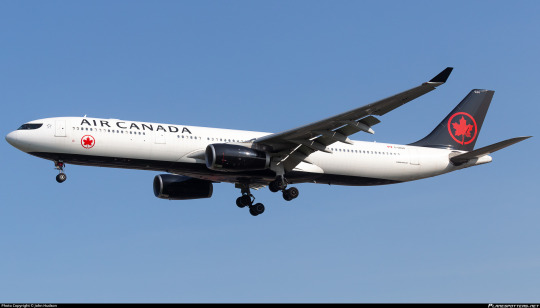
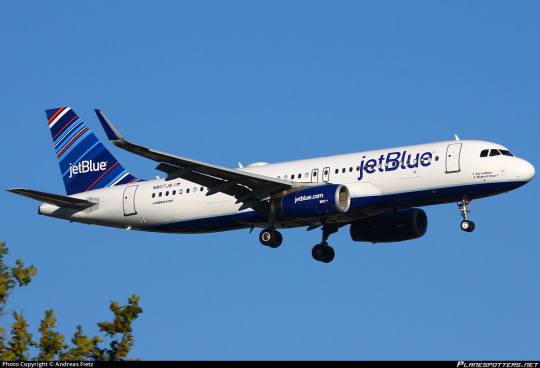
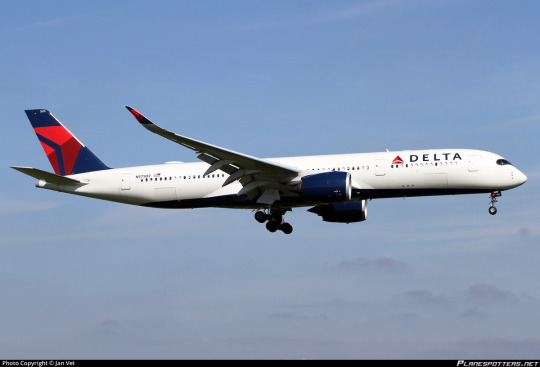
Can you believe these planes fly for different and indeed unrelated airlines?
Safe to say from 5,000 feet below it's a challenge to tell these planes apart. Even taxiing past them you'd need to pay attention. If I forced someone to squint I'm not sure they could identify them properly. How about Southwest?

Bam.
Southwest Airlines was founded in an era that borders on incomprehensible to those of my age bracket. The United States is a nation united in grumbling about Spirit Airlines, and most of Europe is constantly cursing Ryanair under their breath, but it wasn't always like that. The fact of a united enemy at all is new in the US. Back before the 1978 Deregulation Act, it was so prohibitively expensive to operate interstate flights that most airlines just didn't. Interstate flights were left to giant full-service airlines like Delta and Eastern, while international flights were the domain of an even more elite few - Pan Am, TWA, Braniff, and National (no, not that National, the other one) while the scrappier little companies flew short hops for commuters.
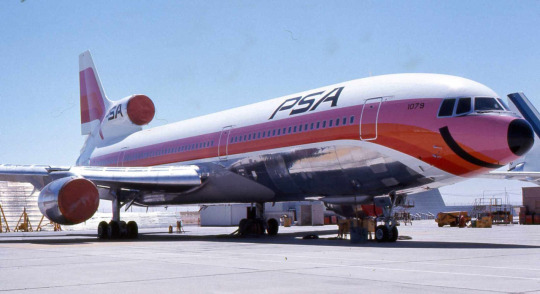
One airline which emerged in this pre-deregulation era was Pacific Southwest Airlines, commonly abbreviated to PSA, an initially tiny airline operating in California. You may recognize them from my icon! PSA is one of the single most important airlines in history because it all but invented the idea of the low-cost carrier. Beyond that, they were a Fun Airline. And while they were flying their grinningbirds all over California something else brewed in the background.
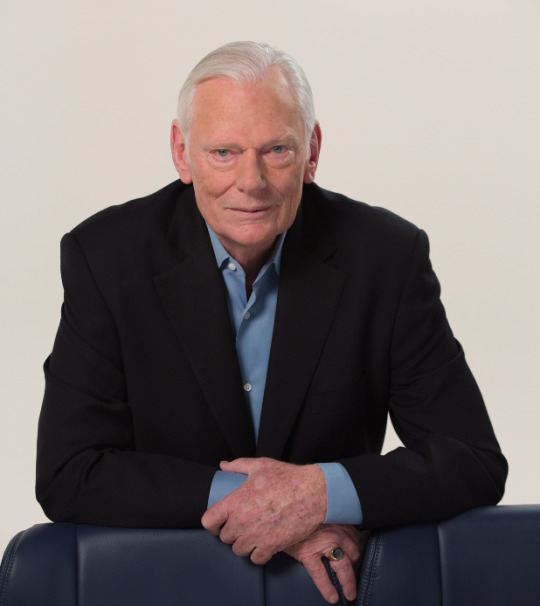
image: SouthwestArchive I have never before in my life seen such a profound pairing of undereye bags with the slicked-back hair and piercing blue eyes of a YA dystopia novel film adaptation villain, darting around to lock onto any sources of potential wealth ripe for acquisition.
In 1971 Southwest Airlines began operating flights. The company was actually incorporated in 1967 (as Air Southwest), the brainchild of then-lawyer Herb Kelleher (and two other people who nobody ever talks about because they're boring). They saw what PSA was doing and saw potential for the massive profits that could be gained from avoiding fees from operating interstate and charging drastically lower fees than the larger carriers. Unfortunately for them the larger carriers also realized this, and they were trapped for three years in lawsuit purgatory, with Braniff, Continental, and Trans-Texas Airways taking the case all the way to the Supreme Court, who apparently declined to review it, recognizing that 'they have come up with an idea that will make them make more money and us make less money' is not a particularly powerful legal argument.
And with that little hurdle over Southwest was open for business! Though they weren't quite starting out as a single rented DC-3 Kelleher very closely modeled the airline after PSA, who seemed to be okay enough with it if them helping to train mechanics at the nascent airline was any indication. After all, at this point they were both intrastate airlines fundamentally unable to compete with each other - Southwest was staying put in Texas with no reason to think this would change anytime soon. They brought a bit of PSA to the state, like the low fares and the stewardesses in hot pants and go-go boots.


So what was their answer to the grinningbird?
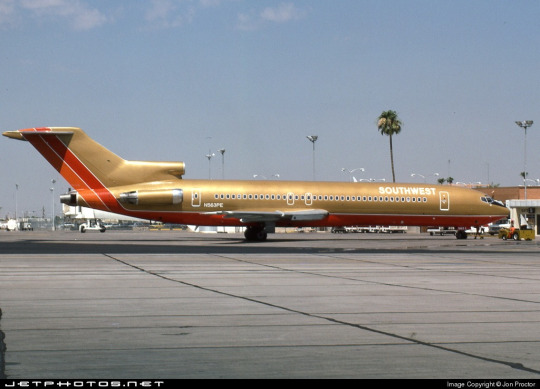
The rare and deeply cursed Southwest 727.
The mustard rocket. It was called "desert gold" but I think we all know that this is mustard. At this point in history brightly colored airplanes weren't even unusual either, so it would have just been regular ugly instead of ostentatious. (I mean...I like this shade of mustard yellow, honest, but I recognize that most people think this is hideous.)
Southwest kept on Southwesting from there. These days, they're massive, and the most common response on my questionnaire for best airline experiences. No comment, as I've never flown with them. Highlights of their journey there include getting a federal amendment passed because they didn't want to relocate their hub from Love Field to Dallas-Fort Worth, getting sued for only hiring female flight attendants, having the first Black chief pilot of any major airline in the US, technically legal tax evasion measures, having to invent elaborate work-arounds for the restrictions placed on them which could have been avoided by just relocating to Fort Worth, absorbing a bunch of other airlines, being the launch customer for both the -300 and MAX 8 models of the Boeing 737, and making approximately a zillion dollars. In 1990 they absorbed Morris Air, a vacation charter airline which developed innovative cost-cutting measures like e-ticketing, including high-up positions on the Southwest corporate ladder for the founders...
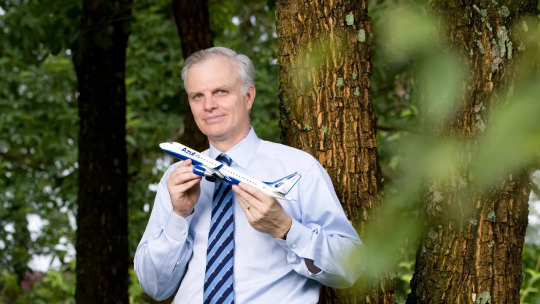
image: conde nast traveller Strange millionaires lurking in woods distributing model airplanes is no basis for an airline industry! ...scratch that, it does appear to be working.
...oh, for heaven's sake, there he is again. Yes, David Neeleman's cost-cutting acumen was indeed put to use at Southwest, meaning that between this and founding jetBlue he basically created low-cost carriers. I reluctantly tip my hat to the man. I would not be able to afford airline tickets without him. But he's just everywhere.
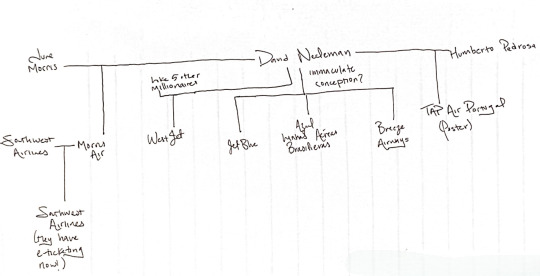
Here is my handwritten faMintly tree. Southwest is jetBlue's cousin once removed, do with that what you will. Anyway, let's hope I never have to add to this. (Not least because I already binned the piece of paper I wrote this out on.)
The turn of the century brought new things for Southwest! In 2000 they had their first major accident (a nonfatal runway overrun resulting in loss of the aircraft). Unrelatedly, in 2001 they released a new color scheme for their fleet, now several hundred strong and entirely composed of assorted models of Boeing 737.

The era of Canyon Blue had begun.
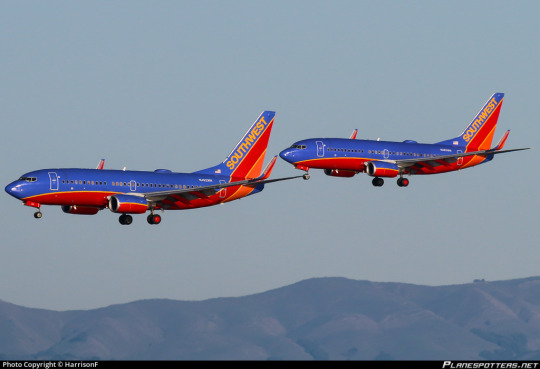
I mean, it's a statement. At this point a plane painted to look like a poisonous frog was in fact a pretty major statement. They were setting out to be an eyesore and I'm sure people were upset about this one, but to the modern eye it looks muted and unfinished. Still bluer than anything David Neeleman had made at that point, but not quite what we know today.
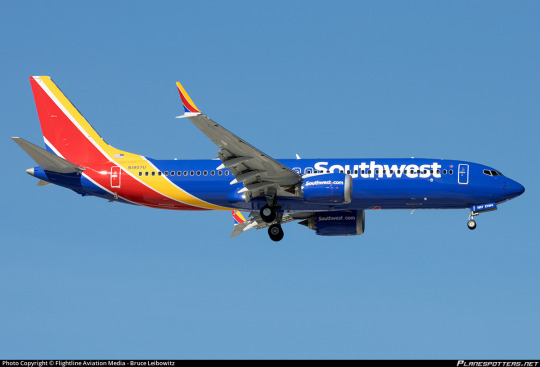
Okay. Yes. There we go.
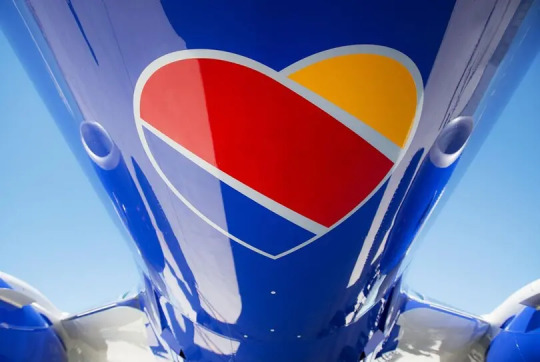
This livery is meant to be the heart from their logo, the same one worn where the plane's heart might be if planes had hearts instead of air-conditioning systems, the colors unwrapped and deconstructed. And boy, is it almost violently colorful! It goes so far that it takes a minute to notice only three colors, plus white, are used in the entire livery. It's almost eyestraining, and I did have to turn the contrast down on my monitor while writing this because I'm fairly photosensitive. It's...less painful when pixels aren't involved.
So this is definitely one-of-a-kind. Well, it was. jetBlue has made choices recently. But this livery is definitely not one that gets lost in the crowd.
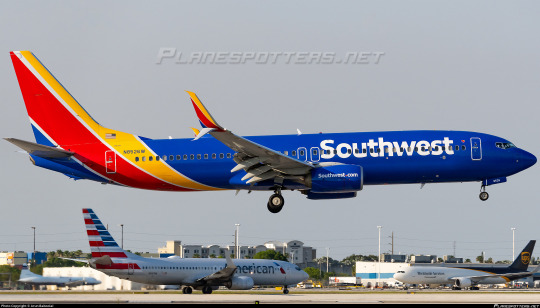
There's very little white or even silver on this airframe, in sharp contrast with...basically every airline. The rest of the livery is vivid and searing yellow and red, unusual shades in airlines, which tend to stick to slightly more muted schemes. And if you couldn't tell who they were by that, the big white billboard wordmark would let you know real quick. I think the white is a bit less legible than I'd like, but I'm not sure how to improve that without making it genuinely eyestrainy. At least it's large and visible, which is crucial for a low-cost carrier, instead of subtle and out of the way on the tail. That might work for an airline with a prestigious air, but that's not Southwest. Southwest is blue and yellow and red.
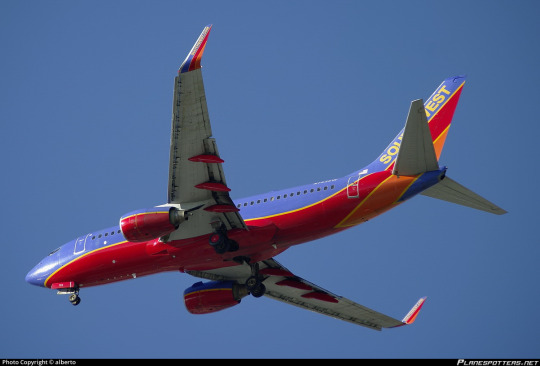
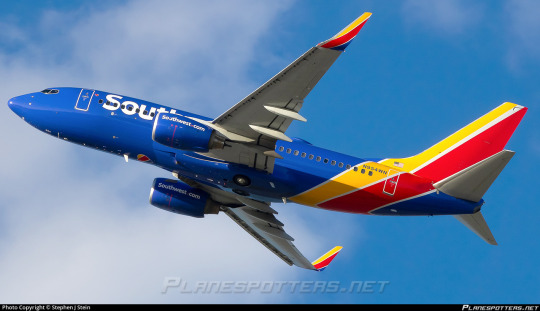
The main differences between the modern livery and Canyon Blue are in the placement of the logo and the colors used. Each shade is brightened significantly, which is why the once-garish Canyon Blue now looks pretty dusty in comparison. They entirely removed the blue from the tail, making it the airframe feel a little less like it's blue with accents and a little more like it's a circus tent. I do wish the yellow and red covered a bit more of the belly, but still...wow.

Some uses of Southwest Sans demonstrated.
The success of this design isn't by accident. Apparently, Southwest consulted no fewer than five design firms, and the font used for the livery and all their material (which I think looks totally fine) was actually commissioned from iconic foundry Monotype. A lot of airline liveries are designed in-house, and that can turn out fine, but Southwest clearly pulled out all the stops and it shows.

Southwest is a low-cost carrier, and this does affect the standards by which I judge their livery. They aren't here to be guided by legacy or decorum the way a flag carrier is - they're here to sell you a cheap ticket on an airline with funny cabin announcements. Circus tent with big lettering in a sea of Eurowhite? Nice, clean execution - I'd call that a job well done.
Grade: B
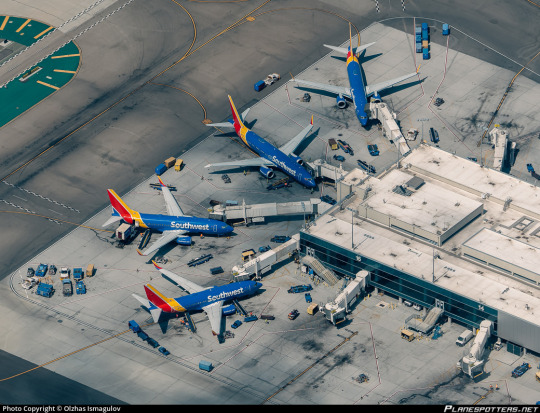
#tarmac fashion week#era: 2010s#era: 2020s#grade: b#region: north america#region: united states#low cost carriers#requests#southwest airlines#neelemanverse
41 notes
·
View notes
Text
Unlocking New Horizons: The Allure of Buying Property in Portugal through the Golden Visa Program
Imagine sipping a glass of Vinho Verde on a sunlit terrace in Lisbon, with the picturesque skyline serving as a backdrop. This serene image signifies more than just a dream; for many, it represents a new beginning and an opportunity for investment. As the world grows increasingly interconnected, countries like Portugal are attracting global attention for their real estate opportunities, particularly through the Buy Property in Portugal Golden Visa program. This article will explore the merits of investing in Portugal's real estate market, the specifics of the Golden Visa, and the implications for foreign buyers seeking a new lifestyle or robust investment opportunities.
The Golden Visa: An Overview
The Buy Property in Portugal Golden Visa program was introduced in 2012 as a strategic initiative to stimulate foreign investment in the country. The program allows non-European Union nationals to gain residency in Portugal by investing a certain amount in real estate. This initiative has become increasingly attractive, offering a pathway not only to residency but also to potential citizenship after five years. The investment options vary, including residential, commercial, or even renovation projects, providing flexibility for buyers to choose what best suits their financial goals and lifestyle.
The significance of the Golden Visa cannot be overstated. Portugal has consistently ranked as one of the most welcoming and diverse countries in Europe, with its warm climate, rich cultural history, and low cost of living. For many investors seeking to relocate or establish roots in Europe, the Golden Visa serves as a golden opportunity to thrive in a nation that marries historical charm with modern convenience. As the interest in Portugal continues to surge, understanding the nuances of the program becomes essential for potential investors.
Why Portugal? The Allure of European Living
Portugal boasts stunning landscapes, vibrant cities, and an inviting community, making it a premier destination for international buyers. The country's strategic location in the Iberian Peninsula also means access to other European cities within a short flight, enhancing its appeal for frequent travelers and business professionals alike. Many choose to buy property in Portugal not just for personal enjoyment but as a strategic investment that offers significant returns.
In terms of lifestyle, Portugal is known for its delectable cuisine, friendly locals, and a pace of life that encourages relaxation and enjoyment. From the sandy beaches of the Algarve to the vibrant streets of Porto, every corner offers a unique experience. For those considering relocation, Portugal remains a wonderful choice, wherein life is balanced with work. For individuals and families seeking an enriching experience, investing in the real estate market becomes an appealing pathway to putting down roots in such a diverse and welcoming nation.
Navigating the Real Estate Market
The process of investing in Portuguese real estate is relatively straightforward, particularly for foreign investors familiar with international buying practices. Understanding the local market dynamics, regulations, and potential pitfalls is crucial for a successful purchase. The Buy Real Estate in Portugal aspect of the Golden Visa program simplifies the buying process, offering clarity in investment choices. Whether focusing on residential properties in bustling cities or serene retreats in the countryside, a wide range of options is available for various budgets and preferences.
Additionally, one of the most attractive aspects of the Portuguese real estate market is the potential for property appreciation. Prices have shown consistent growth in recent years, driven partly by the demand for short-term rentals and the surge of international interest. With the allure of a burgeoning market, savvy investors recognize the opportunity to capitalize on Portugal's increasing popularity as a travel destination. For those looking to dive into the real estate arena, understanding market trends and strategic locations for investment is essential.
Long-Term Benefits of Investing
For many, the decision to buy real estate in Portugal extends beyond immediate benefits; it lays the foundation for long-term investment growth and lifestyle enhancement. Owners not only enjoy their properties but also have the potential to generate income through rental opportunities, either for permanent residents or short-term vacationers. With the rise of platforms like Airbnb, property owners can maximize their investment by capitalizing on the increasing influx of tourists eager to explore Portugal’s charm.
Moreover, the stability of Portugal's residency program offers peace of mind for foreign investors. The potential for citizenship after five years also adds to the program's allure, providing a safety net for families looking to secure their future in Europe. With the right property and investment strategy, buyers can cultivate a financial legacy while enjoying a rich cultural experience.
0 notes
Link
Isar Aerospace, based near Munich, Germany, is scheduled to make the first ever launch attempt of its Spectrum two-stage rocket no earlier than Monday, March 24, at 11:30 UTC from the Orbital Launch Pad at the Andoya Space Center in Norway. Isar is targeting the beginning of a three hour window that ends at 14:30 UTC. The Norwegian Civil Aviation Authority granted a Permit for Launch on Friday, March 14, and the launch period began on Thursday, March 20. The mission, named “Going Full Spectrum,” is the first orbital launch attempt from Norway and from continental Europe, excluding the British Isles and Russia. One other orbital attempt was made from Cornwall in England involving Virgin Orbit’s Launcher One. That rocket failed after launch in January 2023, and Virgin Orbit ceased operations afterward. Graphic showing the flight events of the Isar Aerospace’s Spectrum test launch. (Credit: Isar Aerospace) The Spectrum rocket will be flying on a northwest trajectory over the Norwegian Sea, which would take any payload into a retrograde orbit, although no customer payloads are on board this flight. Andoya, at 69 degrees North latitude and above the Arctic Circle, is one of the most northerly rocket launch sites in the world and can support orbital inclinations between 90 and 110.6 degrees. Andoya is planned to support up to 30 orbital launches per year. Isar Aerospace, founded in 2018, developed Spectrum to serve the small to medium-sized satellite market and is marketing the launcher as a solution for orbiting constellations. The company is also emphasizing its role in helping to maintain Europe’s space sovereignty and resilience through launching from continental European sites like Andoya. Artist’s impression of the Isar Aerospace Spectrum launching from Andoya. (Credit: Isar Aerospace) Spectrum, which took six years of development to reach its first flight, is a rocket built largely out of carbon composites while also featuring 3D-printed high performance metal parts for the engines. Isar Aerospace hopes this cutting-edge technology and automation will be used to lower costs while enabling higher launch cadence, though the vehicle is not reusable. The Spectrum rocket, with both stages and fairing installed, measures 28 m in height and two meters in diameter, and is designed to launch up to 1,000 kg to low-Earth orbit or 700 kg to a Sun-synchronous orbit. This capability puts Spectrum on the higher-end of small satellite launchers, comparable to Firefly Aerospace’s Alpha, while being much larger and more capable than Rocket Lab’s Electron. Artist’s impression of the Spectrum’s second stage launching a payload into orbit. (Credit: Isar Aerospace) Isar Aerospace developed the Spectrum vehicle almost completely in-house with a vertically integrated approach in mind. In a manner similar to SpaceX’s Falcon 9 and Rocket Lab’s Electron, Spectrum uses nine Aquila engines on the first stage and a single Aquila engine with a larger nozzle optimized for vacuum operation on the second stage. The Aquila engine, developed in-house by Isar Aerospace, uses propane and liquid oxygen as propellants. The propane was selected for offering the highest density-specific impulse of all carbon-based propellants. The company also states that propane is cleaner and more environmentally friendly than other fuel options. Spectrum’s second stage is designed to support multiple engine restarts in orbit. This capability allows precise orbital targeting, and the company offers dedicated launches for payloads as well as rideshare flights. Spectrum was also designed with non-pyrotechnic devices for stage and fairing separation, which is meant to give payloads a smoother ride to orbit without jolts caused by using pyrotechnics. Spectrum first stage completes a static fire test ahead of maiden flight. (Credit: Isar Aerospace) The launch will be a test flight and will be the first time all of the vehicle’s integrated systems are tested as a unit. Although some rockets have successfully reached orbit on their first launch, many others have faced issues that caused early termination of flight. Regardless of the result, the company expects to obtain a great deal of valuable in-flight data that will help further iteration of the Spectrum. The Spectrum rocket has already conducted successful test firings of its first and second stages. The first stage’s firing, involving all nine engines, occurred on Feb. 14. The second stage was test fired in the third quarter of 2024. The nine engines in the first stage together generate 675 kN of thrust. Isar Aerospace, named after a river that flows through Munich, has received a launch order from the Norwegian Space Agency for its Arctic Ocean Surveillance program. Two satellites are booked for a launch no earlier than 2028. A Japanese startup company, ElevationSpace, has contracted to launch its 200 kg AOBA spacecraft in 2026, and Spectrum also has launch contracts from Airbus and other companies. Work being done on a Spectrum at the Isar Aerospace factory in Germany. (Credit: Isar Aerospace) Spectrum’s manifest is booked until mid-2027 as per Isar Aerospace chief commercial officer Stella Guillen. The company has also been selected to use a former Diamant launch pad in Kourou, French Guiana, by the French space agency CNES. The Kourou site will allow Spectrum to reach many more orbits than Andoya, including equatorial orbits. Although Isar Aerospace’s orbital rocket is set to launch first, other European commercial startups are also working on launchers of their own, with spaceports in Scotland and Sweden also scheduled to host orbital launches in the not too distant future. The European commercial launch industry, after struggles and setbacks, is starting to field orbital rockets, with Spectrum likely being the first to fly. (Lead image: Isar Aerospace’s Spectrum launch vehicle on the Orbital Launch Pad at the Andoya Space Center in Norway before its first flight. Credit: Isar Aerospace) The post Isar Aerospace set to make first orbital launch from continental Europe appeared first on NASASpaceFlight.com.
1 note
·
View note